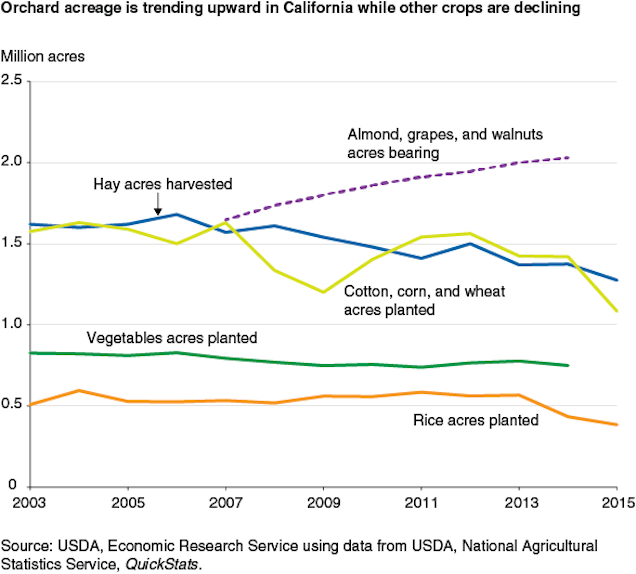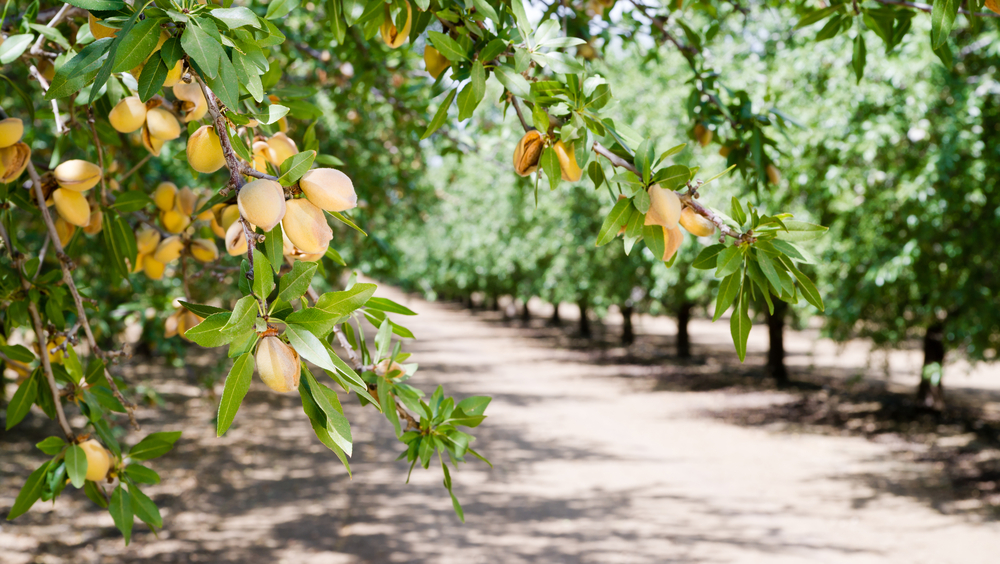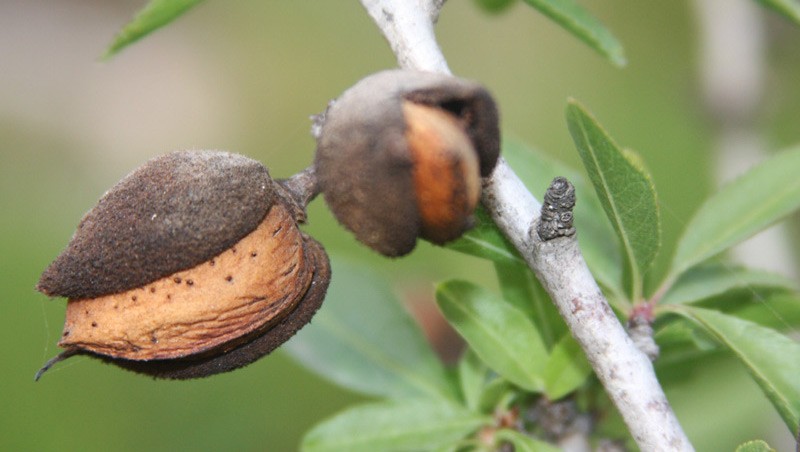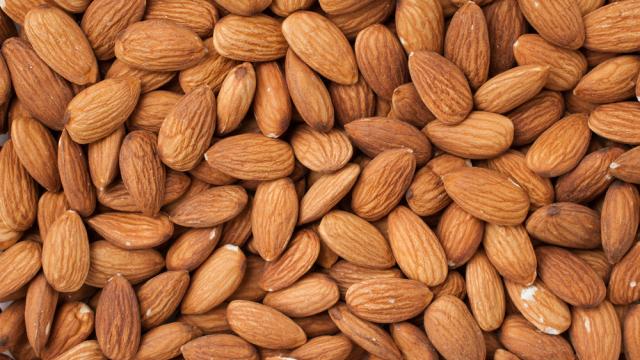Something strange is happening in California: A punishing drought has been hanging over the state these last five years. And yet, in the middle of it, water-guzzling almond production is skyrocketing — and has been every year of the drought. What’s going on? The answer lies in an agricultural quirk.
Almonds have gotten a bad rap recently as the thirstiest plants in the farm world. Though compact, growing these nuts is incredibly water-intensive, with some people pegging the water cost at a 3.7L for a single nut. That’s why this USDA chart on which crops are thriving during the drought is so intriguing.
While crops like hay and rice are taking a dive, orchard crops, like almonds or grapes, have been steadily rising.

But perhaps it’s walnuts or grapes or some other orchard crop than almonds that are fuelling the rise, you say? Not so. In the last ten years, California’s almond production in any of the drought years has beaten all the non-drought years — in some years by more than double. So how are they doing it? I set out to find an answer — and did — hidden deep in the almond trees.

Graph: NASS/USDA
An Agricultural Mystery
The reason for the rise is actually pretty simple, says Ken Shackel, a professor of plant sciences at the University of California Davis and a member of the university’s almond group. “Yields are steadily going up because the acres that were put in years ago went up,” he told Gizmodo.
This makes sense. More land devoted to almonds naturally means more overall almonds. But why would almond farmers be steadily devoting more acreage to an incredibly thirsty crop, right as the drought around them intensifies?
Part of the answer can be found in the cost: Almond prices are very high right now at over $US3 per 450g, making them an appealing crop to have on a farmer’s roster even if they do require an additional water cost. But the much larger part of the answer is not found in dollars, it’s in the plant itself.
“You have to remember that almonds are planted one year, but don’t really bear until three or four years later,” Shackel said. “In almond trees, the first couple years you get just a little, but in five or six years you get much more. They peak at around year twelve.”
The boom of almonds that we’re seeing today is not due to the most recent plantings — it’s due to the years before, most of them pre-drought. A better measure of how almonds are faring right now, noted Shackel, may be in figuring out a yield per acre measurement instead of the overall number.
He was right. The yield per acre measurement did show a different — and much darker — picture.

The Great Almond Crash of 2025?
A dive into NASS stats revealed that while acreage devoted to almonds has been steadily rising, yield per acre rates for California peaked at 1134kg per acre in 2010, the last non-drought year California experienced. Every year since then, the rate has fallen. Today, an almond farmer is likely to pull 227kg of almonds less per acre than six years ago.
If almond production is riding high off of the fumes of previous water-rich years, then surely the next reasonable question is, how much longer can we expect to coast? Are we simply waiting for the hammer to fall — and if so, when will that happen?
It’s not quite so simple as merely counting backwards from the last big planting. Almond farmers are likely to have orchards that they have laid out at several different times, often separated by decades. And while almond yield per acre does appear to be in free fall right now, today’s number is still considerably higher than twenty years ago, due to improvements in agricultural tech.
While predicting exactly when a fall-off might happen is difficult, the overall trend — more land devoted to growing fewer and fewer almonds — is pretty evident. Although we may not know when the drought will finally come for California’s almonds, the fact that it is coming remains clear.

Top image: Almonds / Amawasri Pakdara, Shutterstock; Bottom image: Almond close-up / PikiWikiIsrael
